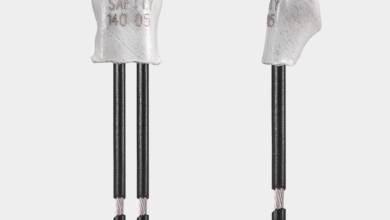Health Effects Linked With Trichloroethylene and Tetrachloroethylene

In the pursuit of industrial progress, humankind has developed many chemicals. Not surprisingly, they are more toxic than natural ones. Of late, trichloroethylene (TCE) and tetrachloroethylene (PCE), among all chemicals, have garnered headlines for all the wrong reasons.
These colorless liquids having sweet smells are classified as carcinogenic by the Environmental Protection Agency (EPA). A recent article by WBOI reveals that EPA wants to phase out tetrachloroethylene (PCE). It aims to ban the chemical because it’s believed to cause rare cancers in Martinsville and Franklin.
Oddly enough, high levels of the chemical TCE have forced evacuations of two apartment complexes in Milwaukee, reports Milwaukee Journal Sentinel.
In this article, we’ll delve into the possible health risks associated with TCE and PCE while briefly touching the two chemicals.
Trichloroethylene and Tetrachloroethylene: An Overview
Trichloroethylene (TCE) and tetrachloroethylene (PCE) are industrial degreasers. These volatile organic compounds are widely used for their solvent properties.
TCE, a colorless organic chemical, doesn’t occur naturally. Rather, it’s created by chemical synthesis. Often, it is used to make refrigerants as well as other hydrofluorocarbons. PCE, on the other hand, is a non-flammable colorless liquid that is used as a dry cleaning agent.
Both these chemicals are present in the soil, water, and air of the places where they are used. Once released, they stay in the environment for a long time and disintegrate slowly. The general public can ingest these chemicals by inhaling air and eating foods processed or drinking water in and around where they are used.
Besides the dry cleaning industry, these chemicals were used extensively by the U.S. armed forces to degrease military equipment. Not surprisingly, PCE and TCE made their way into the groundwater and soil of many military bases.
Case in point—Camp Lejeune. Over one million members of the armed forces and their families were exposed to the toxic water of Camp Lejeune for more than three decades. Exposure to these two chemicals resulted in a host of health issues in people of all age groups, including children.
Possible Health Risks of Exposure to TCE and PCE
The health effects of exposure to TCE and PCE vary, depending on the duration and concentration of exposure. But, in general, they impact the developmental, reproductive, kidney, liver, and neurological functions.
Possible health risks and symptoms of Camp Lejeune water contamination vary from individual to individual. However, the common ones are enlisted below:
1. Non-Hodgkin’s Lymphoma
A relatively large number of studies have discovered that prolonged exposure to TCE and PCE may lead to non-Hodgkin lymphoma. This type of cancer develops in the lymphatic system, the germ-fighting immune system of the body. In this type of cancer, lymphocytes called white blood cells grow in an abnormal manner and can lead to tumors throughout the body.
Those who drank the contaminated water at Camp Lejeune were at a greater risk of developing non-Hodgkin’s lymphoma than those who didn’t. Among the Camp Lejeune victims, the symptoms of non-Hodgkin’s lymphoma include weight loss, fever, fatigue, and swollen lymph nodes, reports TorHoerman Law.
Other non-Hodgkin’s lymphoma symptoms due to exposure to TCE and PCE are chest pain, swelling, abdominal pain, difficulty breathing, fever, coughing, abdominal pain, unexplained weight loss, persistent fatigue, and night sweats.
2. Parkinson’s Disease
While head trauma and genetic mutations are widely known risk factors for Parkison, exposure to TCE is a lesser-known environmental factor for the brain disorder.
This simple, six-atom molecule was first linked to Parkinson’s disease in the late 20th century. Since then, a couple of case studies involving eight people have associated TCE with Parkinsonism. In addition to that, small epidemiological research discovered that recreational or occupational exposure to the solvent puts individuals at 500 percent risk of acquiring PD.
3. Kidney Cancer
Chronic exposures to high doses of PCE and TCE are linked with kidney cancer, reveals a handful of studies. Any individual who drinks water contaminated with these two chemicals is at an increased risk of kidney cancer.
The National Academies Press reveals that Camp Lejeune’s residents exposed to PCE and TCE were more likely to suffer from subsequent chronic renal disease and kidney injury. Symptoms of kidney cancer among those exposed to the two VOCs are pain or lump in the side or back, blood in the urine, and high blood pressure.
The Final Takeaway
As you see, both PCE and TCE have been linked with adverse health effects. These health effects aren’t the only ones you can develop after exposure to the two chemicals. Breast cancer, cervical cancer, esophageal cancer, liver cancer, adult leukemia, multiple myeloma, scleroderma, and hepatic steatosis are other diseases linked with TCE and PCE exposure.
Despite the advancements in the medical field, removing these industrial solvents from the body is impossible. Instead, the body disintegrates the two chemicals and releases them only through urine or exhalation. Avoiding exposure to PCE and TCE is the only way to safeguard yourself from their effects.




